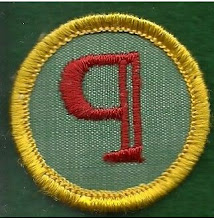It really is all about the story and I can’t say it better than Bob Mayer:
The product is the story. Not the book, not the eBook, not the audio book. The Story.
The consumer is the reader. Not the bookstores, the platform, the distributor, the sales force. The Reader.
Authors produce story. Readers consume story. If anyone is in the path between Author and Reader they must add value to that connection.
http://www.digitalbookworld.com/2012/a-simple-concept-for-publishing/
__________________
I taught "Writing for Non-Writers" at a community college years ago. I expected maybe a half-dozen students, to my surprise, forty-plus people signed up. In the first class, I handed out two index cards to each student: on one, I asked students to write down what they wanted to write about.
Invariably, someone said, "I don't want to write down my topic because someone will steal it."
"OK just to write poetry or fiction or non-fiction, you can further subdivide that into short story, children's book, western, mystery, biography, etcetera... if you wish," I said, writing on the whiteboard, "Or any combination of those. Or maybe you want to write for magazines or newspapers. OK to write 'I don't know yet' too."
The class sorted the index cards by topic; we had two poets, seven who wanted to write children’s books, several who wanted to write for magazines and a couple of "I don't knows"; the class was just about equally divided between people who wanted to write fiction and those who wanted to write non-fiction. There were a large number of people who wanted to write biographies.
I had the class find the others who were writing in their genre; another invariable question, "Do we have to stay in these groups?"
"Of course not, but who's going to understand better your struggles than someone who's writing in the same genre as you?"
"I think it would be better if you mixed us up," said one gentleman.
"I will, next class," I said. "Take a few moments in your groups to exchange names, then we'll talk about your story."
"How do you know my story?" the gentleman asked as a woman--perhaps his wife -- poked him in the ribs.
"I don't know the details of your story," I said after the groups had met. "but I do know that there is only one story and that is -- something happened. Something happened and there's a story in it.
"Everything was going fine and something happened to upset the apple cart; everything was going to hell in a handbasket and something happened to make it less hellish; or nothing happened -- that is, something is always on the verge of happening, but it doesn't happen, or perhaps earth-shaking events are happening around your hero, your protagonist, but they don't affect him or her."
The room was dead silent except for the sound of pens scratching and laptop keys tapping.
"Can you repeat that?"
"Why don't you have slides?"
I repeated what I said and wrote on the whiteboard:
OK - not OK
Not OK - OK
Nothing
And I said, "Writing well means listening well. The slides are on my website. OK, quick show of hands; as far as you know at this minute, how many of you have a story in mind where everything starts OK and things go awry? And... they start awry and get better? How about nothing happens?"
The two poets looked at each other and laughed. I said, "Poetry is a little different. There can be an arc of action--that's what we're talking about here -- the arc of action; but many poems are a snapshot of something in the human condition, explored in nuanced ways; poetry is more like painting to me."
“But there’s still a story.” said one of the students. “I make up stories about paintings all the time.”
I wrote on the whiteboard:
SOMETHING HAPPENED
